Key Points:
- Apple previewed iOS 18 at its annual developer's conference this week.
- One of the new signature features coming this fall in iOS 18 is "Messages via satellite" - enabling recent iPhone models to send and receive text messages from space in areas without cellular coverage.
- Many details are still missing - particularly around cost and usage limitations.
- Apple is currently in the lead when it comes to satellite capabilities integrated into phones, but many competitive offerings are in the works that will come online in the future.
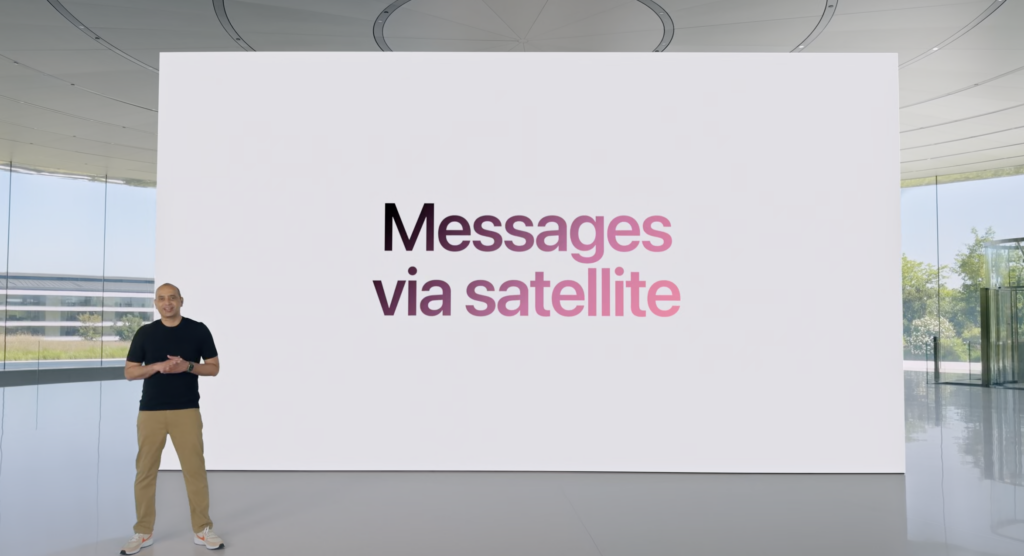
In 2022, Apple jumped ahead of the rest of the industry by being the first to roll out phones with integrated satellite connectivity - enabling this feature in the entire iPhone 14 lineup.
Apple provided emergency satellite messaging capability anywhere (in supported countries) iPhone users could get a clear view of the sky, regardless of cellular coverage.
But this system was designed for true emergencies only - and it could only communicate (slowly!) with emergency dispatch centers.
In 2023, Apple added support for less life-threatening situations by allowing users to contact AAA Roadside Assistance via satellite. But overall, the system remained extremely limited.
We've long suspected that Apple has bigger plans for the satellite capabilities it has been building, and now, at last, we know what is next.
Starting this fall with the release of iOS 18, all iPhone 14 and newer models will be able to send general text messages via satellite!
Can Apple bring this to market before Starlink begins offering text messaging to all T-Mobile customers?
What will this new system be capable of, and what will it cost?
Video Story
Apple’s Satellite Messaging Evolution
Apple's satellite messaging service is built in partnership with Globalstar, the company behind SPOT trackers - and it utilizes Globalstar's already existing satellites and licensed spectrum rights.
By tapping into existing infrastructure, Apple was able to initially roll out service back in November 2022, giving Apple a huge head start, but with a very limited set of features.
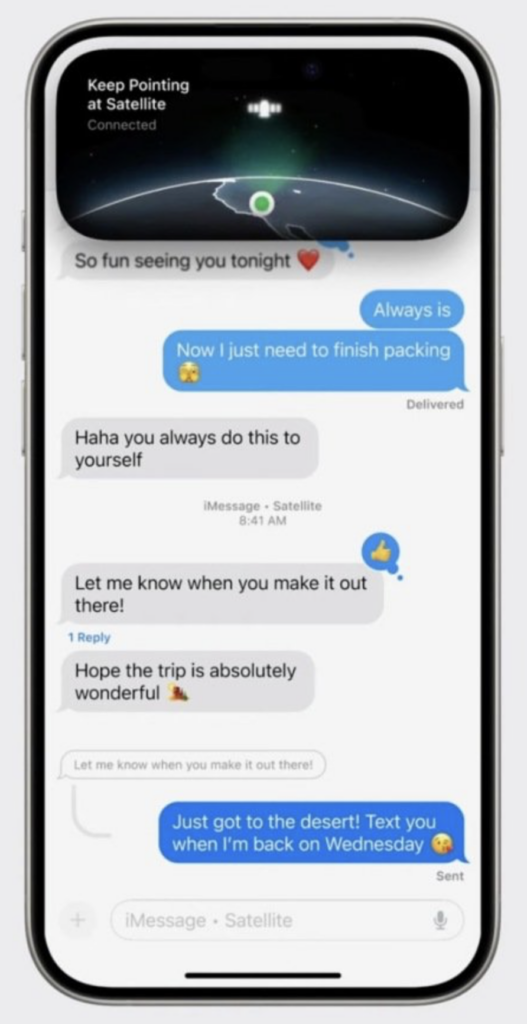
However, Globalstar's systems have historically been extremely limited, essentially enabling little more than a paging network in space.
Going forward, Apple will provide a huge influx of cash that will allow Globalstar to launch a significantly upgraded constellation of new and more capable satellites that could begin to bring more capacity online by 2026.
Even though no new satellites have launched yet, it appears that Apple is feeling confident enough in Globalstar to take satellite messaging beyond just emergency services. In iOS 18 this fall, Apple has revealed that Messages via satellite will be a new core feature.
The system will be capable of sending and receiving text messages, emojis, and tap-backs—but not images, general-purpose data, or notifications.
To use satellite messaging, you will have to follow on-screen guidance to hold your phone up, pointed towards a satellite, until the messages have been sent.
This will likely be a slow and somewhat awkward process, but it will be a revolutionary new capability in the middle of nowhere.
Messages sent to other Apple iMessage users ("blue bubble people") will be end-to-end encrypted.
However, regular SMS will still be supported for sending "green bubble" text messages to any phone number.
Globalstar & Apple's Future Ambitions
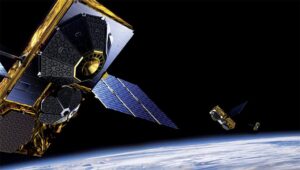
Globalstar has filed for rights to build a next-generation constellation with as many as 3,080 satellites—and to maintain these rights, it must have the first 308 launched by 2029.
Apple is reportedly covering 95% of the projects costs, and will be guaranteed access to 85% of Globalstar's new capacity going forward.
With an investment like this in play, it is clear that Apple very likely has broader future satellite ambitions beyond basic SOS and messaging services.
Keen Apple watchers noticed that Apple has been hiring 5G cellular engineers for its satellite group, making it a likely guess that Apple is also working on enabling satellite voice and data capabilities.
However, Apple's notorious secrecy means that it is very unlikely that we'll learn many more details about what is planned until new services are ready to launch.
Apple is also unlikely to do anything that undermines its terrestrial cellular partnerships, so don't expect Apple to start competing directly with the big cellular carriers, no matter how advanced its satellite capabilities become.
Apple Satellite Messaging Costs
The one thing missing from Apple's announcement this week is any mention of what satellite messaging service might cost - if anything.
Will Apple make satellite messaging free for an initial launch period, make it pay per-per-message, or perhaps make it an included perk of an Apple One subscription?
When Apple enabled satellite emergency SOS features - it promised this core capability would remain free for two years, and Apple extended this with a third year promised to the first wave of iPhone 14 buyers.
This gives Apple at least another full year before the free trials start to end, and it needs to figure out general SOS pricing.
But when roadside assistance via satellite rolled out last year - it wasn't free:
"AAA may charge for roadside assistance services. iPhone 15 and iPhone 14 users who are not AAA members can take advantage of Roadside Assistance via satellite on a pay-per-use basis for AAA’s roadside assistance services."
How Apple chooses to price general satellite messaging services remains unknown for now.
Unless Apple turns on the satellite messaging feature during the iOS 18 beta period, we'll likely have to wait until iOS 18 launches (alongside the new iPhone 16) in September to know for sure how satellite messaging will be priced.
Competitors Racing Forward As Well

Apple isn't the only company pursuing satellite direct-to-cellular capabilities.
We recently reported on Verizon joining with AT&T in partnering with AST SpaceMobile for future satellite direct-to-cellular service that will work with all existing AT&T and Verizon phones, eliminating dead zones.
Meanwhile, T-Mobile and Starlink are busy launching Starlink V2-Mini satellites with direct-to-cell service piggybacking on board that will bring satellite text messaging to all existing T-Mobile customers.
SpaceX’s vice president of Starlink Engineering, Michael Nicolls, recently shared that SpaceX had launched 26 direct-to-cellphone-capable Starlink satellites in May—more than eight percent of what they need for initial cellphone service with partner T-Mobile.
This suggests that SpaceX needs about 325 Starlink satellites to meet this goal.
SpaceX has claimed it is on track to be able to begin offering text messaging service later in 2024 - meaning that it will be a close race between Apple and SpaceX to see who can get satellite messaging out the door first.
Exciting times ahead!
Further Reading
- Industry Update: Mobile Satellite Internet for RVers & Boaters – Early 2024 Update: Starlink, Kuiper, Direct To Cellular, and Beyond! - Our recent deep dive into the state of the satellite internet world.
- Guide: Mobile Satellite Internet Options -
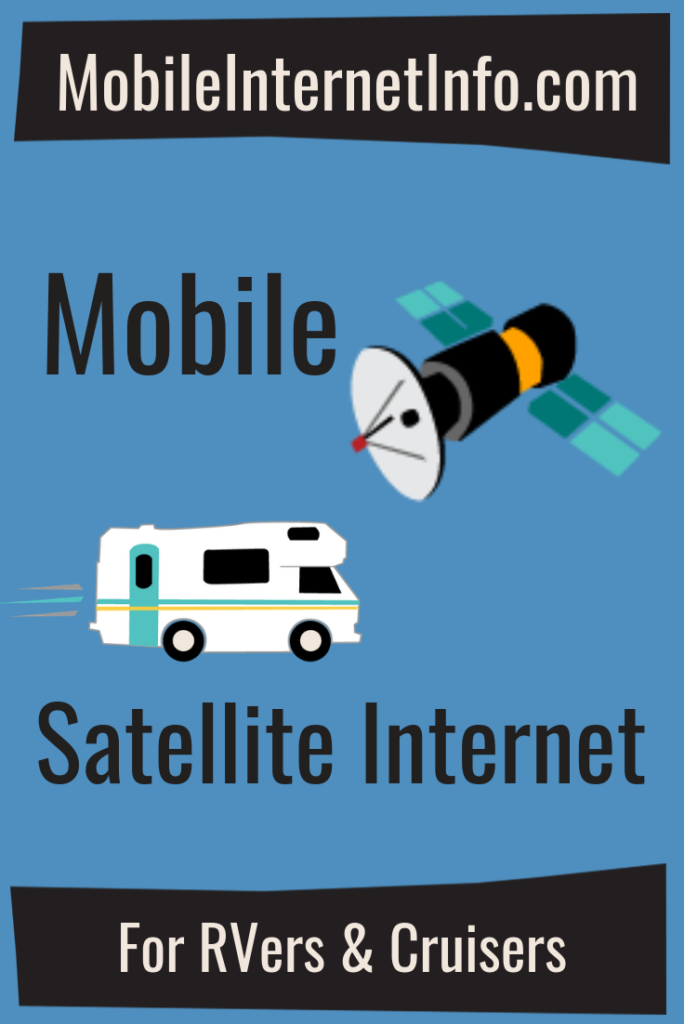 Our featured guide on all the current and future satellite internet options of interest to RVers and cruisers.
Our featured guide on all the current and future satellite internet options of interest to RVers and cruisers. - Resource Collection: All of our Satellite Internet Resources - Our collection of guides, gear center entries, and news coverage on satellite internet.
Related News:
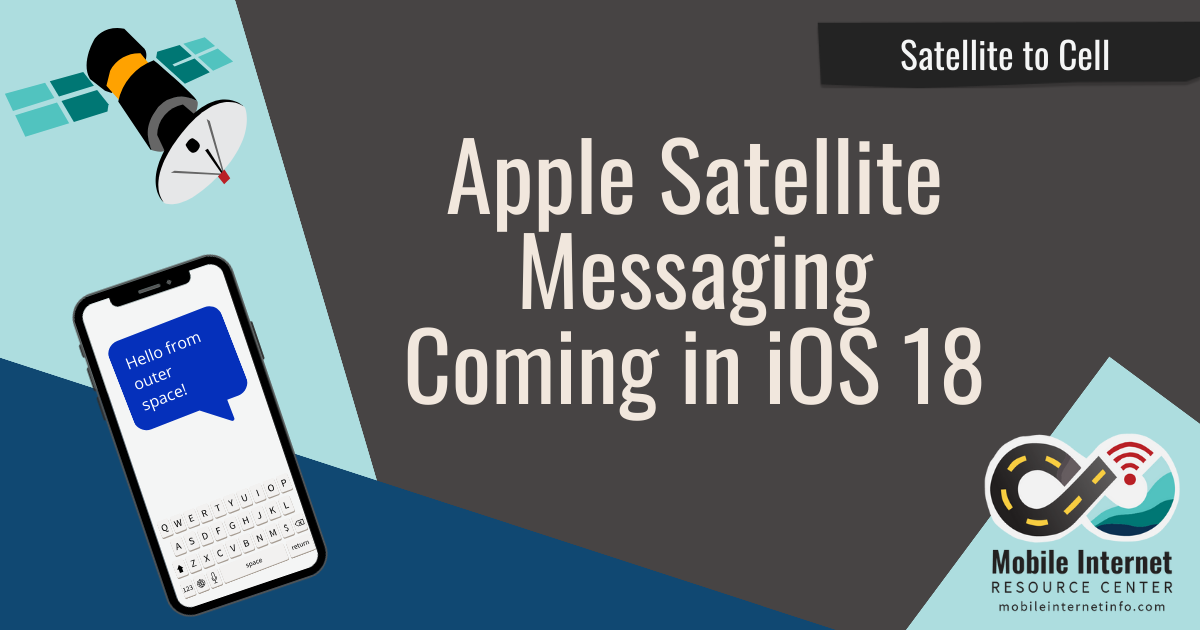







 Mobile Internet Resource Center (dba Two Steps Beyond LLC) is founded by Chris & Cherie of
Mobile Internet Resource Center (dba Two Steps Beyond LLC) is founded by Chris & Cherie of